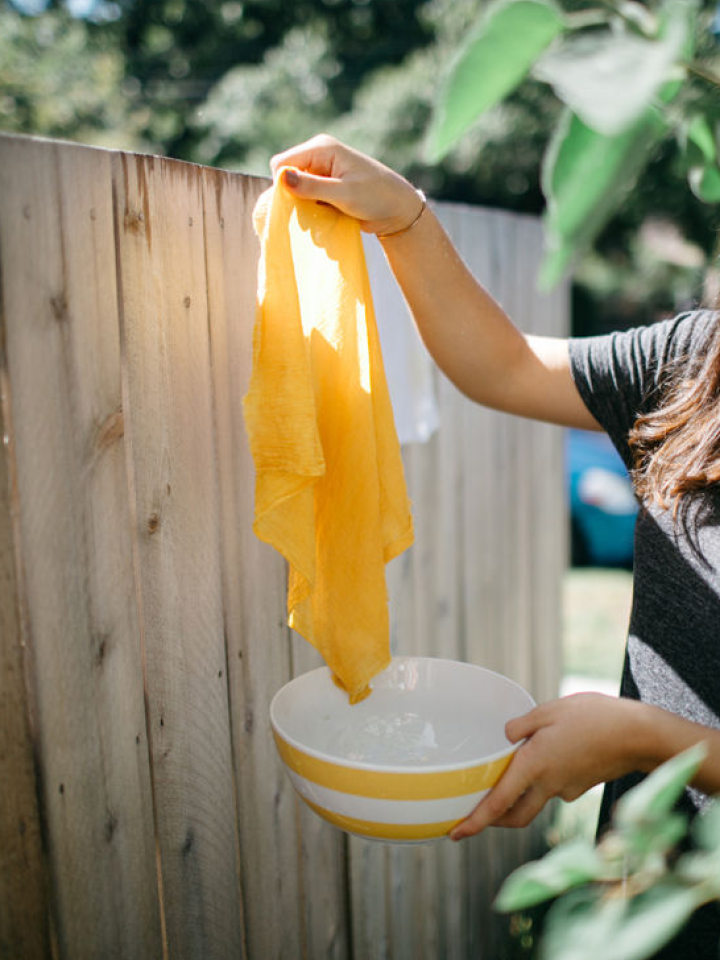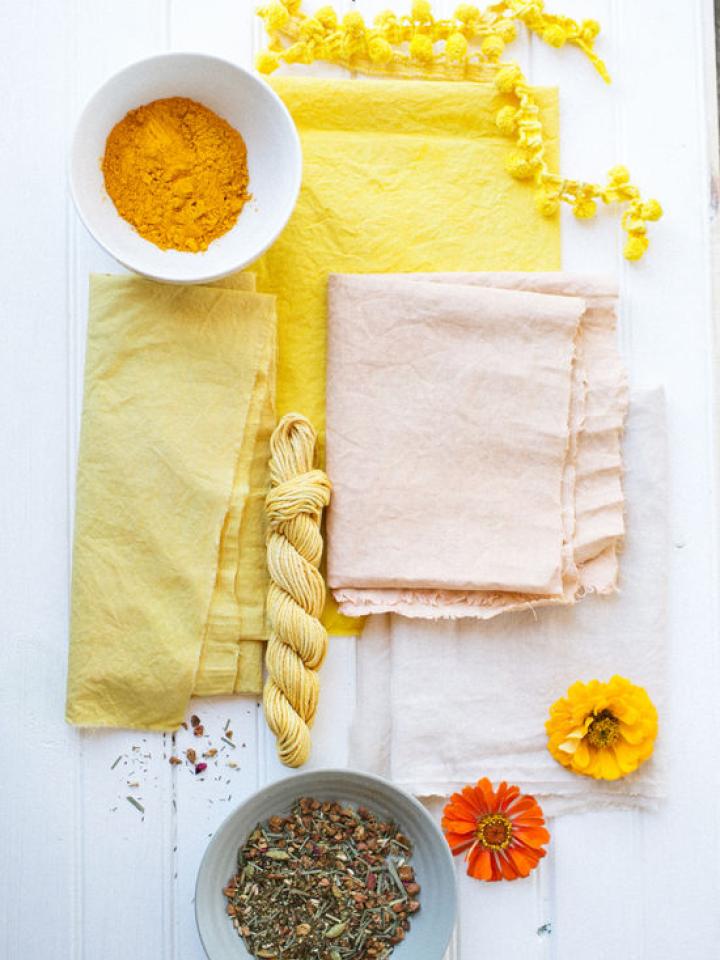What you’ll need:
- A piece of fabric
- A stick
- Flowers
- Large pan
- Colander
Method
-
Lay out your piece of fabric and start placing the flowers on it. You can make any design/pattern you like - get creative!
-
Once you’re happy with how your flowers are arranged, place the stick on one end and roll your fabric around it. Continue rolling up the fabric tightly (in the same motion as you would a swiss roll!).
- Once your long bundles are rolled up, wrap them with twine to secure them. Place a colander inside a large pot and fill with water up to the bottom of the colander. Place the bundles in the colander and boil the water to let them steam. After an hour you can remove them and let them cool over night.

Flowers to dye for
The more vibrant the flowers, the more vibrant the result – so forget barely there delicate shades and look for those with promising pigment. Rose petals, poms, marigolds and zinnias work particularly well as do primroses, begonias and African violets.
Have you ever dyed anything using flowers? If so, we'd love to see the results on our Facebook, Instagram and Twitter pages!





